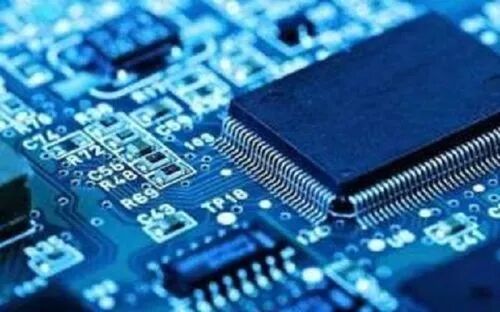Memory chip manufacturers collectively "winter"
 1287
1287The head manufacturers of memory chips are trying to overcome the winter. Samsung Electronics, SK Hynix and Micron are cutting production, dealing with inventory issues, saving on capital expenditures, and delaying progress on advanced technologies to cope with weak memory demand. "We are in a period of declining profitability," Samsung Electronics told investors at its third-quarter earnings conference on October 27, adding that the company's inventory increased rapidly in the third quarter.
Memory is the highest branch of the semiconductor market, with a market space of about $160 billion in 2021, and it can also be seen everywhere in electronic products, it is a standardized product, developed very mature in the international market, the industry with inventory, demand, capacity changes have obvious cyclicality, manufacturers' production and profitability with the cyclical fluctuations of the industry and drastic changes.
According to TrendForce Consulting, the growth rate of the flash memory (NAND) market in 2022 is only 23.2%, which is the lowest growth value in the past 8 years; Memory (DRAM) grew by only 19% and is expected to decline further to 14.1% in 2023.
Jeffrey Mathews, senior analyst of mobile phone component technical services at Strategy Analytics, told reporters that the oversupply of the market has strongly promoted the downward cycle, which is also the main reason for the low price of DRAM and NAND. In 2021, manufacturers are more optimistic in terms of expansion, NAND and DRAM are still in short supply, and as the demand side begins to decline in 2022, the market enters oversupply. Another SK hynix said in its third-quarter earnings report that the demand for DRAM and NAND products was sluggish, and sales and prices were both declining.
Sravan Kundojjala, director of mobile phone component technical services at Strategy Analytics, told reporters that the last recession occurred in 2019, when the revenue and capital expenditure of all memory factories fell sharply, and the weak market lasted for two quarters before bottoming. The situation in 2022 has some similarities with 2019, but this time the adjustment seems to be more drastic.
Jeffrey Mathews said the cycle was also affected by low demand, an economic downturn and geopolitical tensions. The two major drivers of memory over the years, smartphone and PC demand, have weakened significantly and are expected to continue until 2023.
Samsung Electronics said that for mobile devices, demand is very likely to continue to be weak and slow in the first half of next year, and consumer confidence will remain low under the influence of seasonal weakness. For PCs, inventories accumulated due to sluggish sales will run out in the first half of next year, and it is likely to see a sharp recovery in demand. The company will continue to monitor whether the macroeconomy can stabilize in the second half of next year, as well as signs of recovery in the industry.
Sravan Kundojjala said the data center, automotive, industrial, artificial intelligence and networking sectors offer higher future growth for memory vendors. Micron, SK Hynix and Samsung Electronics all mentioned the emergence of some new momentum in the third-quarter earnings report: data centers and servers will become the next strong driver of the memory market.

Inventories are high
A basic electronic device contains the following systems, sensors, processors, memory and actuators, in which the memory undertakes the function of information memory, according to the type of product can be divided into memory (DRAM) and flash memory (NAND) two categories. The common product form of DRAM is mainly memory sticks, Flash can be seen everywhere in life, microSD cards, U disks, SSDs (solid-state drives) and so on.
The memory market is highly concentrated, according to the World Semiconductor Trade Statistics Organization (WSTS) data, in the DRAM market, Samsung, Micron, SK Hynix together accounted for about 94%. In the NANDFlash field, Samsung, Kioxia, SK Hineix, Western Digital, Micron, and Intel together account for about 98%.
According to TrendForce consulting data, DRAM prices have been falling since the beginning of the year, and contract prices fell by more than 10% per quarter in the second half of 2022. NAND pricing is also further reduced, entering the third quarter, the decline widened from the original estimate of 15-20% to 30-35%.
On October 27, Samsung Electronics released its third-quarter results, showing that the semiconductor (DS) division, which is responsible for the chip business, had third-quarter revenue of 23.02 trillion won, lower than analysts' expectations. Revenue of the division responsible for the storage business was KRW 15.23 trillion, down 28% sequentially and 27% year-on-year. Samsung Electronics' segment includes semiconductors, home appliances, panels, and smartphones.
The company said weakness in memory masked the overall performance gains, with overall gross margin down 2.7 percent and operating margin down 4.1 percentage points to 14.1 percent.
On October 26, SK Hynix's third-quarter revenue was KRW 10.98 trillion, operating profit was KRW 1.66 trillion, and sales and operating profit decreased by 20.5% and 60.5% respectively. Another major manufacturer, Micron, released its fourth quarter 2022 financial report (June-August 2022) on September 29, with revenue of only US$6.64 billion, down 23% sequentially and 20% year-on-year.
Samsung Electronics said that the main reason for the weak demand is the current persistent macro problems, as well as the inventory adjustment that customers are experiencing, which is larger than expected. The company is aware that due to the weakening of memory products, the market is concerned about its own high inventory levels.
Samsung Electronics said it was working to manage inventory to a balanced level. Moreover, it is no longer possible to judge current inventory levels by the standards of the past, as customers are going through a round of inventory adjustments that have exceeded expectations.
Jeffrey Mathews said that in the past, driven by the cyclical nature of the memory market, manufacturers rushed to meet the recovery of demand, expand production, and gradually oversupply as customer demand decreased. Now they're dealing with their own inventory.
Micron said significant customers in nearly all end markets are making inventory adjustments. Sravan Kundojjala told reporters that currently, some suppliers are signing long-term agreements with customers to reduce finished products in inventory, and are also working to make inventory fungible to balance any changes in demand.
Conservative strategy
"We have always emphasized optimizing costs so that the cost structure is far better than any competitor, which is currently a way to ensure stable profitability", Samsung Electronics believes that products are price elastic, can use this elasticity, artificially create some demand, of course, the effect is very limited, the overall price trend is still uncontrollable.
SK Hynix said at the third quarter earnings conference that in order to optimize costs, the company worked hard to increase the sales ratio and yield of new products in the third quarter, but the sharp price reduction exceeded the reduced cost, and the operating profit also declined.
According to TrendForce consulting data, the memory output of Samsung Electronics, SK Hynix, and Micron has only maintained a growth of 12-13% this year. In 2023, Samsung Electronics' output will decrease by 8%, SK Hynix by 6.6%, and Micron by 4.3%
Large manufacturers are cautious in terms of capital expenditure and expansion. SK Hynix said that next year's capital expenditure will be reduced by more than 50% year-on-year, and this year's investment is expected to be around 10-20 trillion won. Micron also said it would significantly cut capital expenditures in fiscal 2023 and reduce the utilization rate of manufacturing plants.
TrendForce Consulting said that in terms of memory, compared with Samsung Electronics' chip planning in Q4 2023 and Q4 2022, only 40,000 pieces were added in the middle; SK hynix increased by 20,000 pieces, and Micron was relatively more restrained, only adding 5,000 pieces. In addition, manufacturers were originally building new memory plants, and the progress of the plant is currently advancing, but there is an overall deferral trend.
Samsung Electronics is relatively optimistic about the expansion, saying it will continue to maintain the appropriate level of infrastructure investment to meet medium- to long-term needs, but will be more flexible in equipment investment. Despite the current contraction in market demand, the company strategically needs to prepare for demand recovery from a medium- to long-term perspective, so the company will not artificially reduce production to cater to the short-term supply-demand balance.
Jeffrey Mathews said that the reduction of expenses and production will also affect the research and development of advanced technology manufacturers, and the speed of climbing to advanced nodes will be slower, so the reduction of bit cost (bit cost) will also slow down.
Looking ahead to next year
Different vendors define the memory market differently. According to the terminal division, the three major driving forces of memory are smartphones, PCs, and servers.
TrendForce predicts that the share of the memory market from servers will grow to 36% in 2023, similar to the share of mobile phones. The mobile memory used for mobile phones has less room upwards, and may drop from 38.5% to 37.3%. The flash memory market will be weaker in consumer electronics, with smartphones growing slightly by about 2.8% and laptops continuing to decline by 8-9%.
Liu Jiahao, research manager of Jibang Consulting, said at the "2022 Jibang Consulting Semiconductor Summit and Storage Industry High-level Forum" on October 12 that the development of memory can be divided into several important driving forces, which were driven by notebook computers from 2008 to 2011; In 2012, with the popularity of smart devices such as mobile phones and tablets, coupled with the Internet, these devices replaced laptops as the main driving force for driving memory; In the 2016-2019 period, the Internet application is further expanded, the importance of servers and data centers as digital infrastructure is highlighted, and storage begins to gain the next new impetus (310328).
Jeffrey Mathews said the last decline in memory occurred in 2019 as demand fell in smartphones, the largest end market. At that time, the supply chain was piling up a lot of inventory, demand from smartphone manufacturers was declining, and ASP (average selling price) for NAND and DRAM for smartphones also showed double-digit declines.
Liu Jiahao said that in the 2020-2022 stage, the epidemic, digital transformation, weak consumer electronics and other variable factors appeared, the industry's demand for high-intensity computing is stronger than in the past, and more Internet and IT vendors have laid out data centers, which has also driven digitalization to gradually develop to the cloud. The need for storage for servers will be clearer, and although the market share is still a minority, data centers and servers will become key drivers of the storage market in the medium to long term.
Samsung Electronics will add products for servers and data centers in 2023. Samsung Electronics said demand for DRAM products from servers will remain stable next year, taking into account critical infrastructure investments such as AI and 5G.
Sravan Kundojjala said most vendors are looking to focus less on the PC and smartphone markets. At the same time, the data center, automotive, industrial, artificial intelligence, and networking sectors provide them with opportunities for growth.
Jeffrey Mathews said that due to the continuous advancement of memory technology to advanced nodes, the performance of NAND and DRAM products is expected to achieve a next-generation leap. Vendors are driving their memory portfolios with strong growth in demand in key end markets such as data centers, equipment, and edge computing. In the long run, memory vendors are expected to be cautious in capacity expansion and maintain tighter supply and pricing discipline.








Comment